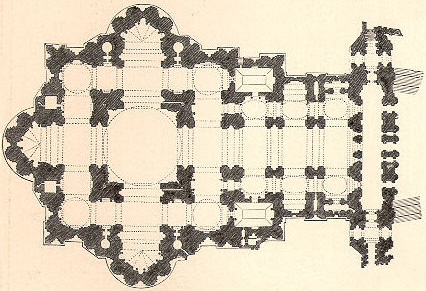Destruction of Historical Heritage: A Silent Weapon of War
The destruction of cultural and historical heritage is frequently used as a tactic of war and ethnic cleansing. This strategy aims not only to defeat an enemy on the battlefield but also to erase its identity, its history, and its very existence from a specific region. Recent events in Nagorno-Karabakh (Artsakh) and past actions in Nakhichevan, as well as cases in Turkey, provide examples of this reality.
In Artsakh, according to the Foundation for the Study of Armenian Architecture, Christian Armenian cemeteries have been destroyed in several villages, including Avetaranots, Jraghatsner, Zardanashen, Madatashen, and Sargsashen. These communities, once inhabited by Armenians forced to flee following Azerbaijan’s takeover of the region, now see the resting places of their ancestors reduced to ruins. Recent satellite images show the disappearance of most of the tombstones in these cemeteries, suggesting a systematic destruction that has taken place over the past year.
This action seem to be part of an ongoing effort to erase the cultural and historical presence in the historic Armenian region. For centuries, Armenians have lived in these villages, burying their loved ones in cemeteries that stood as symbols of their deep-rooted history in the region. The deliberate targeting of these sites is seen by many as an attempt to eradicate traces of Armenian civilization from Nagorno-Karabakh.
Similar reports have emerged about Armenian churches, monasteries, and khachkars being defaced or demolished. Caucasus Heritage Watch has documented, through satellite imagery, the destruction, damage, or threat to at least 110 out of 127 (98%) Armenian cultural heritage sites, including churches, monasteries, schools, and monuments. Between September 2023 and June 2024, three Armenian churches were completely destroyed: Saint Sargis Church in Mokhrenes (18th century), Saint John the Baptist Church in Shushi (built in 1847), and Saint Ascension Church in Berdzor.
The destruction of Armenian cemeteries, with their thousands of unique khachkars, is particularly significant. These artifacts, inscribed on the UNESCO Representative List of the Intangible Heritage of Humanity, are being destroyed or damaged under the guise of “construction” or “renovation.” There is an ongoing process of removing Armenian domes and defacing stone inscriptions in the Armenian language.
It seems that this process has reached unprecedented levels, evolving into a large-scale program to raze Artsakh’s settlements, as the near-total destruction of the village of Taghut-Taghot or the destruction of the village of Karin Tak in the Shushi region and the villages of Mokhrenes, Mariamadzor, and Tsamdzor in Hadrut, along with numerous residential areas in Stepanakert and other settlements.
“Cultural genocide” is the process by which any cultural or religious traces of a group of people exterminated or forced to migrate are destroyed or removed from the land. This can occur through outright destruction, erasure of distinctive cultural or religious features, “reclassification” of cultural heritage by attributing it to another culture, or negligent adjacent construction.
A previous example of “cultural genocide” occurred in Nakhichevan, a region emptied of Armenians by the 1990s. From 1997 to 2006, the elimination of all Armenian religious and cultural heritage from the area was undertaken, culminating in the destruction of thousands of medieval khachkars in the Armenian cemetery of Julfa (Jugha).
The destruction of cemeteries is a violation of international laws that protect cultural and religious heritage. Armenian human rights organizations and advocacy groups have condemned these actions, urging the international community to hold those responsible for these actions accountable. Despite these calls, it seems that there has been little concrete action from global bodies such as UNESCO.
Similar situations also occur in Turkey, where Armenian heritage sites continue to be vandalized and destroyed. In January 2021, a historic Armenian Catholic Church in the Turkish city of Bursa was offered for sale. Shortly after, another church in Bursa was put up for sale. Furthermore, in the province of Kütahya, the Armenian Church of Saint Toros, dating back to 1603 and considered an important site of memory, being the place where the musicologist Gomidas was baptized, was demolished despite having protected status. The church had last been used as a wedding hall and a movie hall, and authorities had remained indifferent to calls for its restoration or use as a cultural center.







